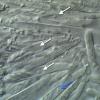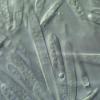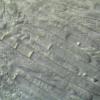
09-01-2026 17:41
Arnold BüschlenHallo, F. dilatata wird von vielen Bryoparasiten

09-01-2026 10:08
 Blasco Rafael
Blasco Rafael
Hola, en el mismo habitat que la anteriorRetamaDia

08-01-2026 21:22
 Blasco Rafael
Blasco Rafael
Hola, He recogido esta muestra de Orbilia sobre Re

07-01-2026 10:24
 Danny Newman
Danny Newman
Pezicula sp. on indet. hardwood Appalachian Highl

07-01-2026 22:22
 Danny Newman
Danny Newman
Tatraea sp. on indet. hardwood The Swag, Great Sm

07-01-2026 17:29
 Marc Detollenaere
Marc Detollenaere
Dear Forum,On a barkless Populus I found some smal

10-11-2021 17:33
 Riet van Oosten
Riet van Oosten
Add-on topic http://www.ascofrance.com/forum/7059

07-01-2026 10:05
 Danny Newman
Danny Newman
cf. Chaetospermum on XylariaCosby Campground, Grea

02-01-2026 17:43
MARICEL PATINOHi there, although I couldn't see the fruitbody, I
Lachnum clavigerum with bodies in asci
Chris Yeates,
01-06-2015 16:02
 Bonjour tous
Bonjour touswhile preparing some images of Lachnum clavigerum on mossy stem bases of Chamerion angustifolium I noticed an interesting phenomenon in many mature asci. This may be a common feature of this or related fungi, but I have certainly not noticed it before.
The asci as they approach full ripeness develop a vacuole in their upper part with the mature spores more or less biseriately arranged towards the apex. In the lower part of these vacuoles there was often a globose body - very active and constantly kept in motion. These varied from perfect spheres to irregularly-shaped globose bodies; in at least one case (blue arrow in illustrations) there was a twin. Perhaps these globules are a by-product of the build up of turgidity in the ascus before the spores are shot out.
As I say, this may be a common phenomenon and I have simply overlooked it, but I would welcome any comments people might care to make. (All photo's are of living material).
Cordialement
Chris
Hans-Otto Baral,
01-06-2015 16:17

Re : Lachnum clavigerum with bodies in asci
Hi Chris
I can only assume that this corresponds to the "Psilachnum-guttule". in that genus it occurs qite frequently, and it is shot with the spores. But in Lachnum I can hardly remeber to have seen it, also my L. clavigerum was without. In Pezoloma i saw it now and then, though often only in immature asci while it disappears in mature asci.
I think with Cresyl Blue it does not stain, but in KOH it always disappears.
No idea about the fuction or composition. Surely it is the Brown's molecular movement that causes the body to move within the vacuolar sap, if this theory is still valid at all today.
Zotto
I can only assume that this corresponds to the "Psilachnum-guttule". in that genus it occurs qite frequently, and it is shot with the spores. But in Lachnum I can hardly remeber to have seen it, also my L. clavigerum was without. In Pezoloma i saw it now and then, though often only in immature asci while it disappears in mature asci.
I think with Cresyl Blue it does not stain, but in KOH it always disappears.
No idea about the fuction or composition. Surely it is the Brown's molecular movement that causes the body to move within the vacuolar sap, if this theory is still valid at all today.
Zotto
Chris Yeates,
01-06-2015 18:53

Re : Lachnum clavigerum with bodies in asci
I have now had a good look at the Psilachnum folder on the Cubby site - this looks to be very similar, I shall keep an eye out for it in these and other genera.
ich danke dir wie immer Zotto!
LG
Chris
ich danke dir wie immer Zotto!
LG
Chris




